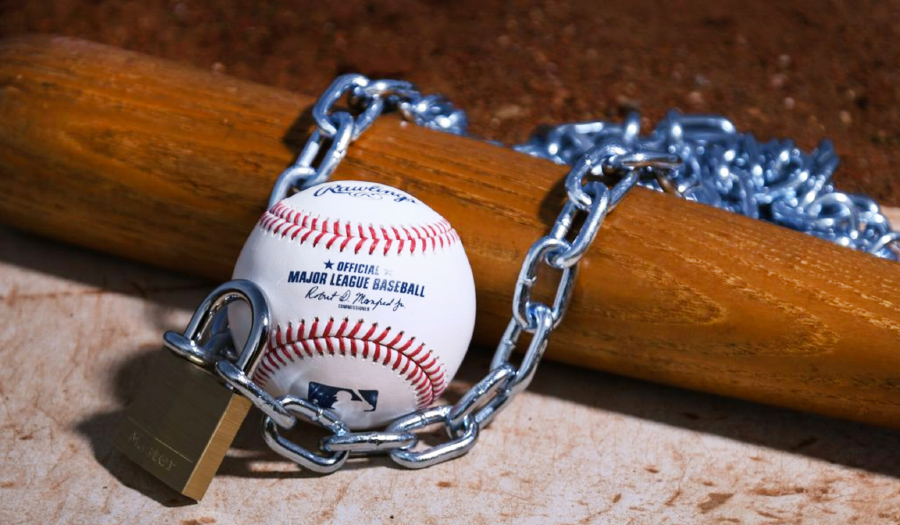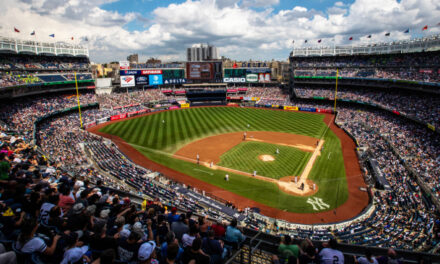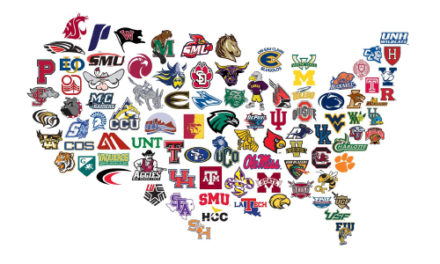
Between the NFL and the College Football Conference Championship weekend last week, you may have missed it. Major League Baseball is now officially in the midst of a lockout.
Just what the sport needed. Right? Interest in the sport that was once ‘America’s Pastime’ is waning. Fewer kids are playing it. Fewer people are watching it. The games take over three hours. But I digress. Here is what you need to know about the lockout.
I guess it was inevitable. For a few years now, most people in the sport expected that the impending expiration of the Collective Bargaining Agreement on December 2nd would lead to a work stoppage.
There is plenty of time before spring training begins. Both sides can still bargain and compromise their way to an agreement. What we also know is that both sides will blame the other for the stoppage.
 One thing to remember. It is the owners who are locking the players out. The Collective Bargaining Agreement formed by MLB owners and the MLB Players’ Association in 2016 had a four-year life, and that expired at 11:59 p.m. ET on Dec. 1. Because that deadline passed without a new agreement, the owners had basically two choices: continue business as usual, under the terms of the expired agreement and continue negotiating with the MLBPA in hopes of reaching a new agreement at some point in the future, or impose a lockdown, creating a sense of urgency for both sides to get a deal hammered out. They chose the lockdown.
One thing to remember. It is the owners who are locking the players out. The Collective Bargaining Agreement formed by MLB owners and the MLB Players’ Association in 2016 had a four-year life, and that expired at 11:59 p.m. ET on Dec. 1. Because that deadline passed without a new agreement, the owners had basically two choices: continue business as usual, under the terms of the expired agreement and continue negotiating with the MLBPA in hopes of reaching a new agreement at some point in the future, or impose a lockdown, creating a sense of urgency for both sides to get a deal hammered out. They chose the lockdown.
What does a lockdown mean? During the lockdown, no major league free agents can sign and no trades can be made. Players have no access to any sort of team facilities, which is especially troublesome for those rehabbing their way back from serious injuries. Nobody employed by a team in a non-playing capacity can have any sort of communication with players. The free agents who have yet to sign and the players who expect to be traded are just stuck in limbo.
What do the players want? They want ALL teams to be competitive and younger players to be paid better. I agree with the competition item. Tanking is a problem. Too many teams in any given year just aren’t trying to win. If they strip their roster to the bare bones, they save on payroll. The thinking is that it’s easier to lose 100 games with minimum-salary players. They are going to get their TV revenue no matter what their record is.
This acceptance of losing has diminished the market for veteran players who can still contribute. If the goal is only 70 wins, why pay a free-agent $6.5 million a season when a rookie is better for the overall plan at $570,000?
As for the younger players issue, as it stands now, most players are not eligible for salary arbitration until after their third season and aren’t eligible to become a free agent until after their sixth season. The players would like to see both those numbers drop.
What do the owners want? More money of course. That includes having more teams in the playoffs. That means more games. And that also means the players also want more money.
As always, owners want to limit the amount spent on players, but there is an intriguing twist to this. Some owners will chase their targeted players in free agency, no matter the cost. Owners on the bottom of the spectrum want to keep those other owners from doing that because it prices them out of the best players.
What have both sides reportedly have agreed to thus far? Apparently, both sides are in favor of adding the designated hitter to the National League on a full-time basis, That’s about it.
That leaves a lot to be resolved before late February. There are those who feel the stoppage could continue until Opening Day. I think that is highly unlikely. Yes, there are many issues to be resolved, but nothing like the dispute back in 1994. That was when the owners were intent on installing a salary cap and the players flat-out refused. There’s nothing like that in this one.
Both sides seem committed to avoid a stoppage heading into spring. The owners are still smarting from losing money during the COVID-shortened 2020 season. The players start receiving their LARGE checks once the season starts and you know they will want to get their money.
In the end, money and greed will win out. Three to four hour baseball games with upwards of 10 pitching changes a game will return









